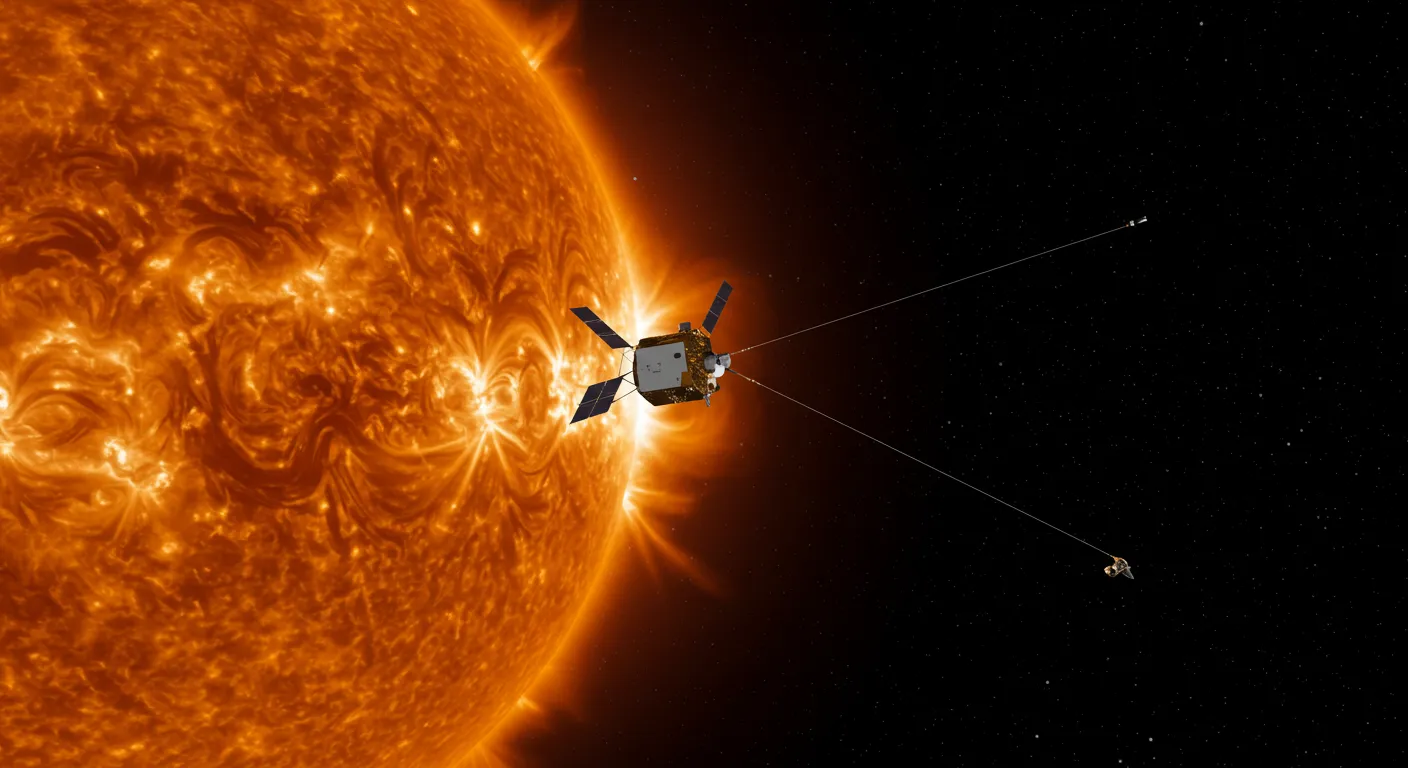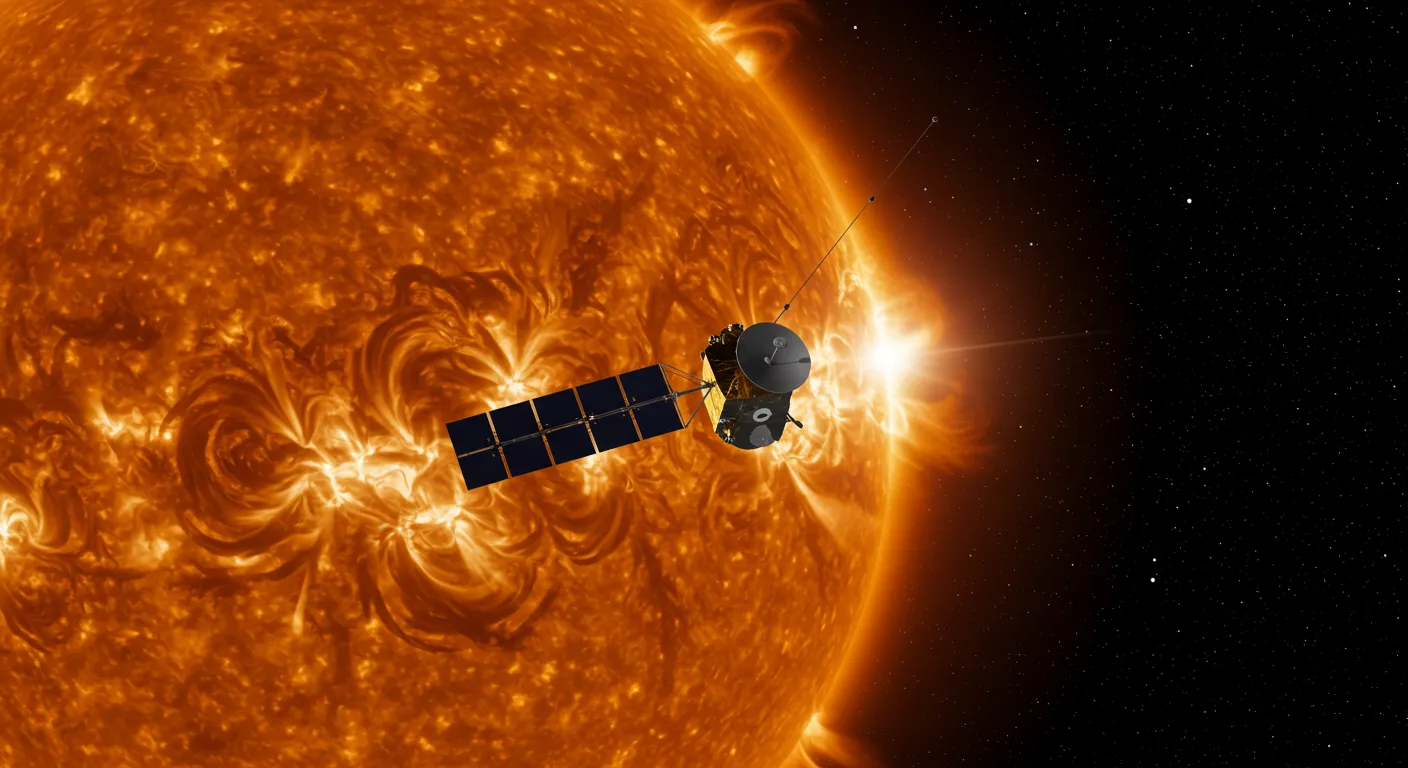Parker Solar Probe: The NASA Spacecraft That Broke Records by Touching the Sun

In the vast expanse of space exploration, few missions have captured the imagination and scientific curiosity of humanity like the Parker Solar Probe.
Anúncios
Launched by NASA in 2018, this groundbreaking spacecraft has redefined our understanding of the Sun, venturing closer to our star than any human-made object in history.
By “touching” the Sun—passing through its outer atmosphere, the corona—the probe has not only broken records but also unlocked secrets that could revolutionize our knowledge of solar physics and space weather.
This article delves into the extraordinary journey of the Parker Solar Probe, its technological marvels, the challenges it overcame, and the groundbreaking discoveries it has made.
We’ll also explore why this mission is pivotal for future space exploration and how it impacts our daily lives on Earth.
The Mission: A Journey to the Heart of Our Solar System
The Parker Solar Probe was designed with one audacious goal: to study the Sun up close and personal.
Named after Dr. Eugene Parker, the astrophysicist who first theorized the solar wind, the probe has traveled through the scorching heat of the Sun’s corona, enduring temperatures exceeding 2,500 degrees Fahrenheit (1,377 degrees Celsius).
What makes this mission so remarkable is its ability to withstand extreme conditions.
The probe’s heat shield, made of a carbon-composite material, protects its instruments from the Sun’s intense radiation, allowing it to collect data from just 4 million miles above the Sun’s surface—a record-breaking proximity.
This innovative design was a significant engineering challenge, pushing the boundaries of materials science.
The mission’s success relies on a combination of advanced technology and careful planning, ensuring that the probe can operate effectively in such harsh environments.
Why the Sun’s Corona Holds the Key to Solar Mysteries
The Sun’s corona, its outer atmosphere, has long puzzled scientists.
Surprisingly, it’s millions of degrees hotter than the Sun’s surface, a phenomenon that defies conventional physics.
The Parker Solar Probe has provided unprecedented insights into this mystery by measuring the corona’s magnetic fields, plasma, and energetic particles.
One of the probe’s most significant discoveries is the detection of “switchbacks”—zigzagging magnetic structures in the solar wind.
These switchbacks may explain how energy and heat are transferred from the Sun’s surface to its corona, shedding light on one of the most enduring questions in solar science.
Understanding these dynamics is crucial for predicting solar activity and its effects on Earth.
The findings from the probe could lead to new theories about solar behavior and its impact on the heliosphere, the bubble-like region of space influenced by the solar wind.
+ Mars Rovers: How Many Are There and What Are They Doing?
Technological Marvels: Engineering the Impossible
Building a spacecraft capable of surviving the Sun’s extreme environment required cutting-edge technology.
The Parker Solar Probe is equipped with a suite of instruments designed to measure magnetic fields, solar particles, and plasma waves.
Its thermal protection system, a 4.5-inch-thick shield, ensures the spacecraft’s instruments remain at a comfortable 85 degrees Fahrenheit (29 degrees Celsius) despite the surrounding inferno.
The probe’s solar arrays, which power its systems, are cooled by a revolutionary thermal regulation system.
This innovation allows the arrays to retract and extend as needed, ensuring they don’t overheat while maintaining optimal power levels.
Moreover, the engineering team faced numerous challenges in ensuring that all components functioned reliably under extreme conditions.
Each instrument was meticulously tested to guarantee its performance, making the Parker Solar Probe a true testament to human ingenuity in aerospace engineering.

The Impact of the Parker Solar Probe on Space Weather Prediction
Understanding the Sun isn’t just an academic pursuit—it’s crucial for protecting our technology-dependent society.
Solar flares and coronal mass ejections (CMEs) can disrupt satellites, power grids, and communication systems.
By studying the Sun’s behavior, the Parker Solar Probe helps scientists predict space weather events more accurately, potentially saving billions of dollars in damages.
For instance, data from the probe has already improved models of solar wind dynamics, enabling better forecasts of geomagnetic storms.
This knowledge is vital for safeguarding astronauts on future missions to the Moon and Mars, where they’ll be exposed to higher levels of solar radiation.
The implications of the probe’s findings extend beyond space exploration; they also enhance our understanding of how solar activity affects Earth’s climate.
By correlating solar events with terrestrial phenomena, scientists can develop more robust predictive models for both space weather and climate change.
Breaking Records: A Timeline of Achievements
Since its launch, the Parker Solar Probe has shattered multiple records.
In 2021, it became the fastest human-made object, reaching speeds of 364,660 miles per hour (586,864 kilometers per hour).
It also holds the record for the closest approach to the Sun, a feat it will continue to surpass as it spirals closer with each orbit.
Here’s a snapshot of its milestones:
| Date | Achievement |
|---|---|
| August 12, 2018 | Launch from Cape Canaveral, Florida |
| November 2018 | First perihelion (closest approach to the Sun) |
| April 2021 | Flew through the Sun’s corona, “touching” the star for the first time |
| December 2021 | Set speed record of 364,660 mph (586,864 km/h) |
These achievements highlight the probe’s significance in advancing our understanding of solar physics.
As it continues its mission, the Parker Solar Probe is expected to set even more records, pushing the boundaries of what we know about our closest star.

The Future of Solar Exploration: What’s Next?
The Parker Solar Probe is far from finished.
Over its seven-year mission, it will complete 24 orbits around the Sun, each time venturing closer and gathering more data.
By the end of its mission, scientists hope to answer fundamental questions about the Sun’s magnetic fields, solar wind, and the mechanisms driving space weather.
This mission also paves the way for future exploration.
Insights from the probe could inform the design of spacecraft for missions to other stars or even the development of advanced propulsion systems.
As technology advances, the knowledge gained from the Parker Solar Probe will serve as a foundation for future missions aimed at exploring the outer reaches of our solar system and beyond.
The lessons learned will help shape the next generation of space exploration initiatives.
++ The Impact of the Voyager Probes on Modern Space Exploration
Why the Parker Solar Probe Matters to Everyone
While the Parker Solar Probe may seem like a distant scientific endeavor, its findings have real-world implications.
From improving satellite communications to protecting power grids, the probe’s data enhances our ability to navigate the challenges of living in a solar-powered universe.
Moreover, the mission inspires a sense of wonder and curiosity.
It reminds us that even in an age of advanced technology, there are still mysteries waiting to be unraveled—and that humanity’s quest for knowledge knows no bounds.
In addition, the probe’s discoveries have the potential to influence policies regarding space weather preparedness and mitigation strategies.
By understanding solar phenomena better, we can develop more effective measures to protect our infrastructure and ensure the safety of future space missions.
Conclusion: A New Era of Solar Science
The Parker Solar Probe has not only touched the Sun but also touched the hearts and minds of people worldwide.
Its groundbreaking achievements remind us of the power of human ingenuity and the importance of exploring the unknown.
As the probe continues its journey, it will undoubtedly uncover more secrets of our star, shaping the future of space exploration and our understanding of the universe.
In the words of Dr. Eugene Parker, “The Sun is the only star we can study up close.
What we learn here will teach us about stars throughout the galaxy.”
The Parker Solar Probe is proving just how true that statement is, one orbit at a time.
For further insights and updates on the mission, visit NASA’s Parker Solar Probe page.
Tables for Quick Reference
Table 1: Key Facts About the Parker Solar Probe
| Parameter | Details |
|---|---|
| Launch Date | August 12, 2018 |
| Mission Duration | 7 years (planned) |
| Closest Approach | 4 million miles (6.4 million kilometers) from the Sun’s surface |
| Top Speed | 364,660 mph (586,864 km/h) |
| Key Discoveries | Switchbacks, solar wind dynamics, coronal heating mechanisms |
Table 2: Benefits of the Parker Solar Probe’s Discoveries
| Area of Impact | Benefits |
|---|---|
| Space Weather | Improved prediction of solar storms and geomagnetic events |
| Technology | Enhanced protection for satellites and power grids |
| Human Spaceflight | Better radiation shielding for astronauts |
| Scientific Knowledge | Deeper understanding of solar physics and stellar behavior |
The Parker Solar Probe is more than a spacecraft—it’s a testament to human curiosity and our relentless drive to explore the cosmos.
As it continues its mission, we can only imagine what new frontiers it will uncover, bringing us closer to the stars than ever before.
